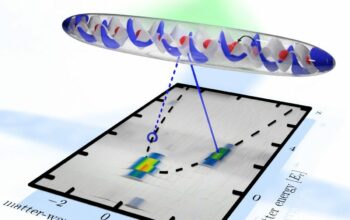Engineering, as a discipline, encompasses a multitude of specialized branches, each with its unique focus and application. Among these domains, one particularly intriguing field is that which intertwines with the principles of light—optics. But which branch of engineering is dedicated specifically to the manipulation and application of optical phenomena? The answer lies within the realm of optical engineering, a subset of several broader categories, each contributing to the intricate tapestry that is modern technology.
To commence, it is prudent to delineate the core principles of optical engineering. This discipline is fundamentally concerned with the design and application of systems that utilize light. Such systems include everything from simple lenses to sophisticated imaging systems used in cameras and telescopes. The intricate workings of optics are harnessed in a myriad of applications, leading one to muse: have you ever wondered how your smartphone captures those stunning photographs from mere photons?
Optical engineering, while primarily associated with light’s behaviors—reflection, refraction, diffraction, and dispersion—is inextricably linked to other prominent fields such as electrical engineering, materials science, and even mechanical engineering. A robust understanding of light is essential in these domains, as contemporary technology often requires the integration of optical systems with electronic and mechanical frameworks.
One cannot delve into optical engineering without recognizing its foundational nature in photonics. This burgeoning field focuses on the generation, manipulation, and detection of photons, typically within the visible spectrum, but extending into the ultraviolet and infrared ranges. Photonics plays a vital role in various technologies, including fiber-optic communications, laser systems, and photovoltaic devices. Herein lies a challenge: as technology evolves, can one engineer innovative optical systems that not only perform but also surpass current limitations in speed, efficiency, and capability?
The applications of optical engineering span a broad spectrum. For instance, in the medical field, imaging modalities such as optical coherence tomography (OCT) have transformed diagnostics, enabling non-invasive imaging of biological tissues. The confluence of optics and medicine poses an exhilarating prospect—how might future optical engineers revolutionize health care through enhanced imaging techniques?
Moreover, the entertainment industry has been significantly impacted by optical engineering. Augmented reality (AR) and virtual reality (VR) systems rely heavily on optical principles to create immersive experiences. Engineers tasked with designing these systems grapple with a fascinating question: how do you craft an optical system that not only delivers high fidelity but also maintains user comfort and realism in the virtual world?
In addition, the realm of telecommunications has seen transformative advancements due to the advent of fiber-optic technology. Optical engineers have pioneered systems that transmit data at astonishing speeds over vast distances. The challenge remains: can we continue to innovate and enhance the capacity of optical fibers to accommodate the exploding bandwidth demands of modern communication?
As we navigate further into the digital age, the relevance of optical engineering becomes increasingly pronounced. Fields such as autonomous driving call for sophisticated optical sensing technologies, such as LiDAR (Light Detection and Ranging), which are integral to the navigation and safety of self-driving vehicles. Optical engineers face the excitement and strain of designing sensors that are not only precise but also capable of functioning effectively across varying environmental conditions. How does one optimize such systems for reliability and accuracy in real-world scenarios?
The education path for aspiring optical engineers typically includes a robust foundation in physics and mathematics, coupled with specialized training in optics and photonics. This includes understanding electromagnetic theory, geometric optics, and wave optics. Proficiency in simulation software, such as Zemax or LightTools, enables engineers to model and analyze optical systems before fabrication. Furthermore, hands-on laboratory experience is crucial to fully grasp the complex behaviors of light in physical environments.
The future trajectory of optical engineering appears vibrant. Continuous advancements in nanotechnology, quantum optics, and materials science are paving the way for innovative developments. Optical engineers are now exploring metamaterials—materials engineered to have properties not found in naturally occurring substances. These materials can manipulate light in unprecedented ways, potentially leading to breakthroughs in invisibility cloaks and superlenses. The excitement of this frontier leads us to ponder: will future engineers redefine our understanding of optical limits?
In conclusion, while optical engineering is a distinct branch dedicated to understanding and utilizing optical phenomena, it operates at the intersection of various engineering disciplines, enriching a plethora of applications that impact daily life. From telecommunications to medical imaging, the challenges and opportunities within this field are boundless. As technology continues to evolve, the insatiable curiosity of engineers will invariably lead to innovative solutions. With each leap into the realm of light, we could witness a reimagining of what is possible when the principles of optics and engineering conjoin.










